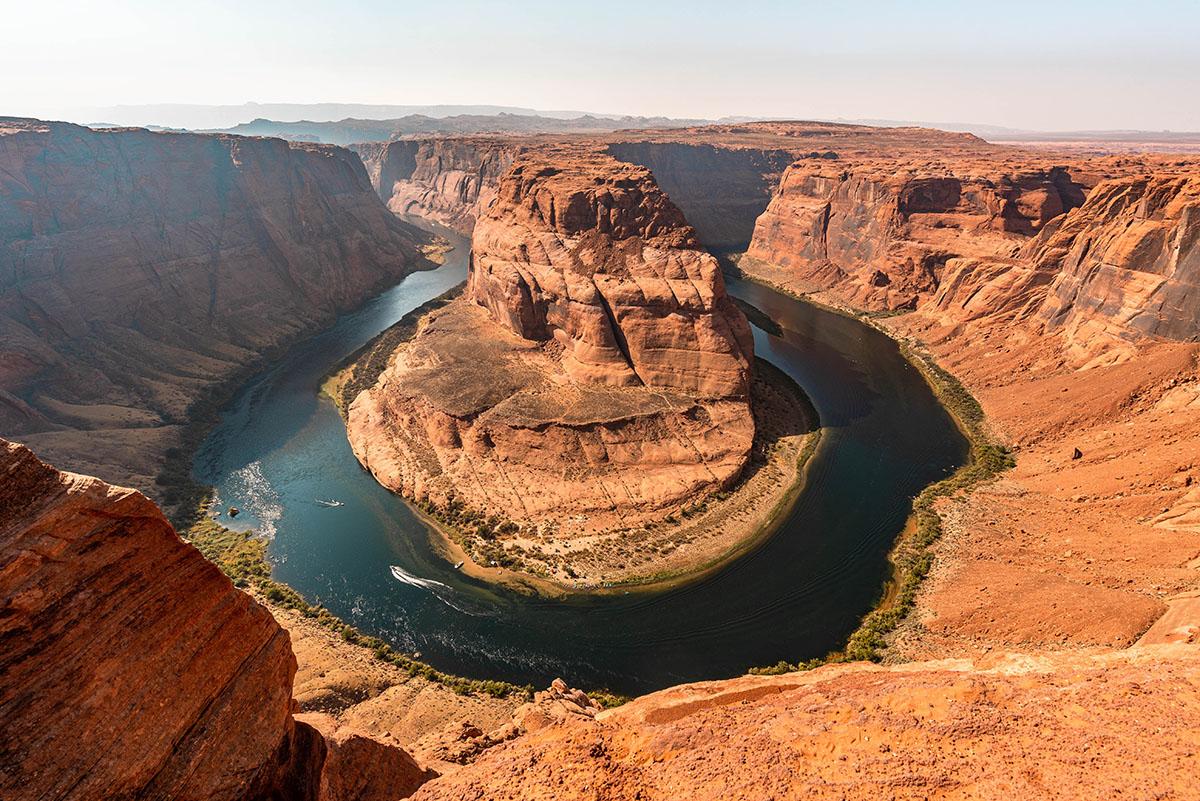Q&A: Proposed Cuts to the Colorado River, What It Means For Those Who Rely On It

On April 11, the Biden administration released a plan to manage the Colorado River. Since 2000, the river, which flows from Colorado to northwestern Mexico, has experienced a historic extended drought impacting the regional water supply. One of the federal government’s proposals evenly cuts water allotments for Nevada, Arizona and California, the lower basin states in the Colorado River Compact.
The DU Newsroom spoke with Kevin Lynch, an environmental law professor at the Sturm College of Law, to understand what this means going forward.
Can you explain what’s happening with the Colorado River?
Tens of millions of people rely on the Colorado River in the southwestern United States, from Los Angeles to Phoenix to Denver. Water from the Colorado River has enabled important and highly productive agriculture in the desert, and growing and attractive communities such as Phoenix. But our use of the Colorado River exceeds what nature provides, with the result that the river frequently dries up before it reaches the ocean. And the amount of water in the Colorado River is going down over time, particularly due to changes as a result of climate change.
What does the Biden administration’s proposal mean for the lower basin states?
This is one of the proposals put forward for short-term management of Lake Powell and Lake Mead. Those reservoirs have reached critically low levels in recent months, and thus Reclamation has called for cuts to water usage. The proposal to share the cuts evenly would benefit Nevada and especially Arizona, which has the most junior water rights. Under the Colorado River Compact and the prior appropriation doctrine used in the Western U.S., the lowest priority water users have their water cut off first during times of drought or scarcity. This proposal would soften the harsh impacts that prior appropriation would have on Arizona. However, [the U.S. Bureau of] Reclamation has also proposed an option that California supports that would allocate cuts based on priority. This would favor California due to its users having the most senior water rights. The Biden administration is signaling they want the states to reach a compromise somewhere between these extremes.
Why does the proposal not target the upper basin states? (Colorado, New Mexico, Utah and Wyoming)
Because this proposal is focused on the short-term operation of Lake Powell and Lake Mead, it is focused on cutting water use in the lower basin (California, Nevada, and Arizona). The upper basin states have not yet fully utilized their “share” of water under the Colorado River Compact, while the lower basin states have. For longer-term planning, the upper basin will have to be included and they can expect calls to forfeit some of their claims to water on paper because there simply is not enough water to meet all the needs.
What’s the role of the U.S. Bureau of Reclamation?
The U.S. Bureau of Reclamation is a federal government agency, part of the Department of the Interior, that operates dams, canals, and power plants in the Western United States. Reclamation plays a key role in the management of the Colorado River because it operates two huge reservoirs, the largest in the country, on either side of the Grand Canyon. Lake Powell sits upstream of the Grand Canyon and is where the upper basin states store their water under the Colorado River Compact. The lower basin states store their water in Lake Mead, which sits below the Grand Canyon and includes Hoover Dam. Because it is responsible for managing both reservoirs, Reclamation plays a key role in the management of water in the Colorado River.
Why couldn’t the seven states in the Colorado River Compact come to an agreement on their own? Should the compact be updated?
The Colorado River Compact was flawed from the start and is not well-suited to the modern reality of climate change, and thus it probably should be updated. Most notably, the Compact allocated water during an unusually wet period, which means that more water was allocated on paper than exists in the river today or into the future. Beyond that, the compact reflects many structural inequities in our system, such as poor consideration of tribal water rights in the river or the exclusion of communities of color from owning property including water rights in the early days of water rights in the Western states. And the goals of the Compact, to foster white settlement of the West and development of agriculture and industry, are no longer well-suited to what our water needs are moving forward. But will the compact be updated? Change is hard, and the easier path would be to push for incremental changes within the system.
Can these problems surrounding water rights and drought caused by climate change be fixed through regulations or laws?
Many of our existing laws can help us respond to the crisis on the Colorado River, but they will likely require a significant change in mindset from the good-ole-boy approach that has dominated up until now. The concepts of “beneficial use” or the “public interest” in state water law can be dragged into the 21st century, in order to curtail existing wasteful uses of water. Agricultural interests, in particular, hold the vast majority of water rights along the Colorado River, and they often lack incentives to conserve water under our “use it or lose it” approach. But states can curtail such wasteful uses by reimagining how beneficial use and the public interest are interpreted, perhaps redirecting some portion of the water rights from wasteful agriculture to ecological interests in the river itself or to higher value uses such as supporting growing human populations in the region. Ultimately though, it will take careful planning on a long-time horizon, and cooperation and shared sacrifice amongst all the competing claims to water in the region, to truly rise to the occasion and respond to the crisis on the Colorado River.







